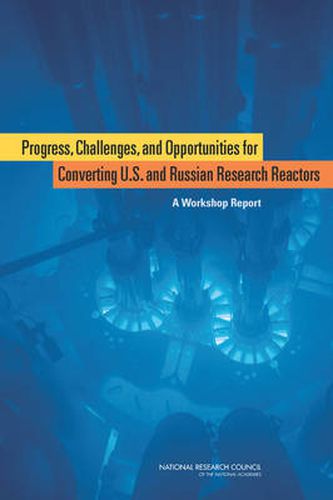Readings Newsletter
Become a Readings Member to make your shopping experience even easier.
Sign in or sign up for free!
You’re not far away from qualifying for FREE standard shipping within Australia
You’ve qualified for FREE standard shipping within Australia
The cart is loading…






Highly enriched uranium (HEU) is used for two major civilian purposes: as fuel for research reactors and as targets for medical isotope production. This material can be dangerous in the wrong hands. Stolen or diverted HEU can be used-in conjunction with some knowledge of physics-to build nuclear explosive devices. Thus, the continued civilian use of HEU is of concern particularly because this material may not be uniformly well-protected. To address these concerns, the National Research Council (NRC) of the U.S. National Academies and the Russian Academy of Sciences (RAS) held a joint symposium on June 8-10, 2011. Progress, Challenges, and Opportunities for Converting U.S. and Russian Research Reactors summarizes the proceedings of this joint symposium. This report addresses: (1) recent progress on conversion of research reactors, with a focus on U.S.- and R.F.-origin reactors; (2) lessons learned for overcoming conversion challenges, increasing the effectiveness of research reactor use, and enabling new reactor missions; (3) future research reactor conversion plans, challenges, and opportunities; and (4) actions that could be taken by U.S. and Russian organizations to promote conversion. The agenda for the symposium is provided in Appendix A, biographical sketches of the committee members are provided in Appendix B, and the report concludes with the statement of task in Appendix C.
$9.00 standard shipping within Australia
FREE standard shipping within Australia for orders over $100.00
Express & International shipping calculated at checkout
Highly enriched uranium (HEU) is used for two major civilian purposes: as fuel for research reactors and as targets for medical isotope production. This material can be dangerous in the wrong hands. Stolen or diverted HEU can be used-in conjunction with some knowledge of physics-to build nuclear explosive devices. Thus, the continued civilian use of HEU is of concern particularly because this material may not be uniformly well-protected. To address these concerns, the National Research Council (NRC) of the U.S. National Academies and the Russian Academy of Sciences (RAS) held a joint symposium on June 8-10, 2011. Progress, Challenges, and Opportunities for Converting U.S. and Russian Research Reactors summarizes the proceedings of this joint symposium. This report addresses: (1) recent progress on conversion of research reactors, with a focus on U.S.- and R.F.-origin reactors; (2) lessons learned for overcoming conversion challenges, increasing the effectiveness of research reactor use, and enabling new reactor missions; (3) future research reactor conversion plans, challenges, and opportunities; and (4) actions that could be taken by U.S. and Russian organizations to promote conversion. The agenda for the symposium is provided in Appendix A, biographical sketches of the committee members are provided in Appendix B, and the report concludes with the statement of task in Appendix C.